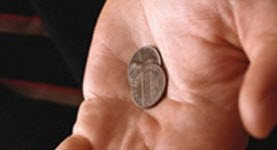Bankruptcy. The word itself is daunting, symbolizing the worst fears of businesses and individuals alike, but to a rapidly growing population, bankruptcy means a great deal. By purchasing assets from bankruptcy auctions, savvy buyers—from young, hardcore investors to retired vacationers looking for a timeshare—have saved millions off of retail prices in the last year.
Where do the assets come from? When an individual or company files bankruptcy, the debtors are held to a certain list of exemptions, or assets that they are allowed to keep. A trustee is appointed in the case to determine if there are any assets to liquidate for the benefit of the creditors, sells the assets and distributes the proceeds according to the laws of the particular region. Sales are court ordered, and most are sold “as is, where is,” meaning that there are no warranties or guarantees attached to the sale. Bankruptcy assets are not foreclosures or repossessions.
As a buyer, bankruptcy sales are a relatively low-risk, high reward investment. Many assets sell for an average 20% of the original value. For highly depreciating assets, it’s possible and common to see extremely low sale prices. The drawback is that the buyer is, “on his own,” to perform due diligence (determine everything possible about the asset). Often the information available from the estate is limited. It is often beneficial to follow bankruptcy auctioneers like bkassets.com, as auctioneers have usually examined an asset in depth before the court orders a sale.
Whether it’s vacant land to start a ranch in Texas, a diamond tennis bracelet, investing in judgments or stock, a timeshare, ATV’s, a first family home, or even something more bizarre like an alligator farm, bankruptcy auctions are the route to go for the deal of a lifetime.

